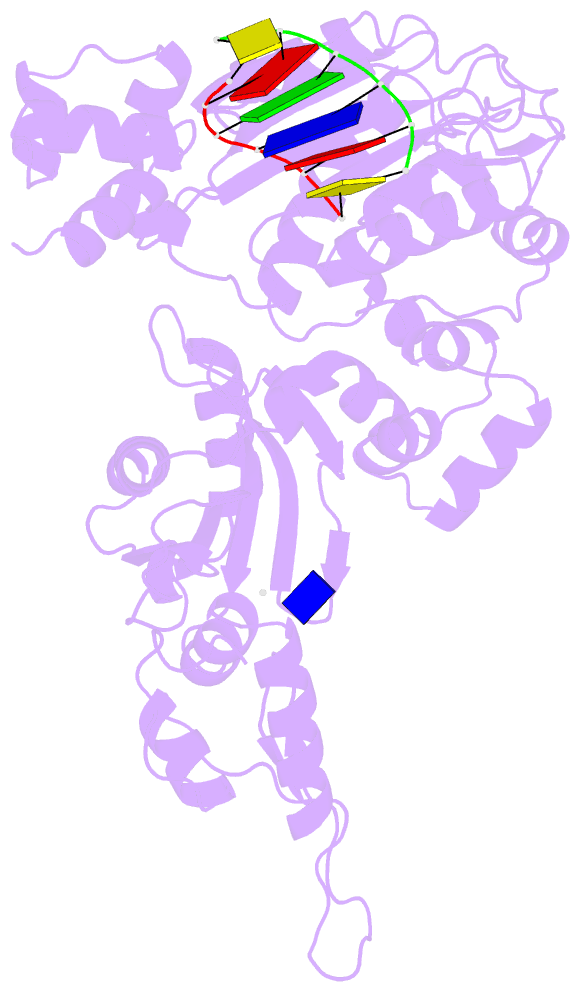Summary information and primary citation
- PDB-id
- 4xrh; DSSR-derived features in text and JSON formats
- Class
- transferase-DNA
- Method
- X-ray (3.0 Å)
- Summary
- Human DNA polymerase lambda- mgdttp binary and complex with 6 paired DNA
- Reference
- Liu MS, Tsai HY, Liu XX, Ho MC, Wu WJ, Tsai MD (2016): "Structural Mechanism for the Fidelity Modulation of DNA Polymerase lambda." J.Am.Chem.Soc., 138, 2389-2398. doi: 10.1021/jacs.5b13368.
- Abstract
- The mechanism of DNA polymerase (pol) fidelity is of fundamental importance in chemistry and biology. While high-fidelity pols have been well studied, much less is known about how some pols achieve medium or low fidelity with functional importance. Here we examine how human DNA polymerase λ (Pol λ) achieves medium fidelity by determining 12 crystal structures and performing pre-steady-state kinetic analyses. We showed that apo-Pol λ exists in the closed conformation, unprecedentedly with a preformed MgdNTP binding pocket, and binds MgdNTP readily in the active conformation in the absence of DNA. Since prebinding of MgdNTP could lead to very low fidelity as shown previously, it is attenuated in Pol λ by a hydrophobic core including Leu431, Ile492, and the Tyr505/Phe506 motif. We then predicted and demonstrated that L431A mutation enhances MgdNTP prebinding and lowers the fidelity. We also hypothesized that the MgdNTP-prebinding ability could stabilize a mismatched ternary complex and destabilize a matched ternary complex, and provided evidence with structures in both forms. Our results demonstrate that, while high-fidelity pols follow a common paradigm, Pol λ has developed specific conformations and mechanisms for its medium fidelity. Structural comparison with other pols also suggests that different pols likely utilize different conformational changes and microscopic mechanisms to achieve their catalytic functions with varying fidelities.





